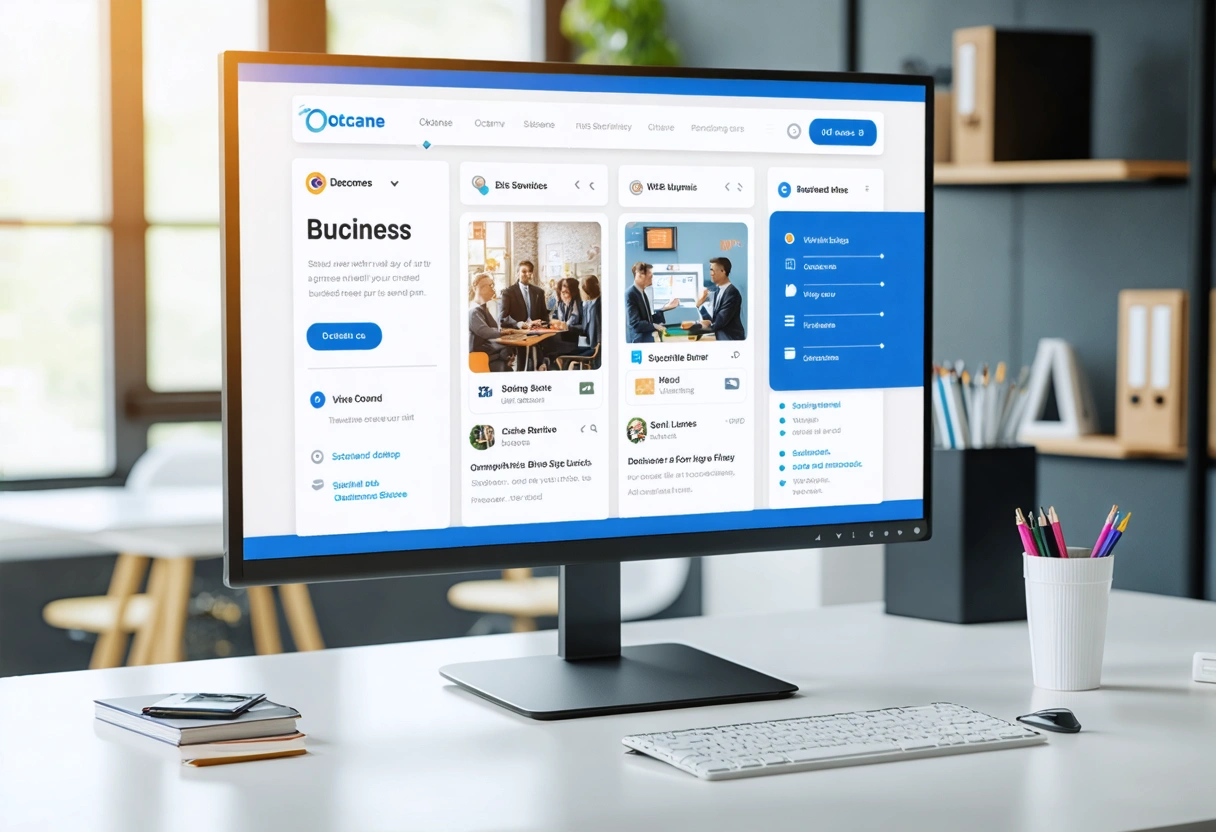The Intersection of Design & SEO: How Guru’s Website Designs Improve Your Search Ranking
In the ever-evolving digital landscape, the synergy between website design and search engine optimization (SEO) has become a cornerstone for online success. While many businesses focus solely on optimizing content or building backlinks, the design of a website is equally critical in determining search engine rankings. This post dives deep into how Guru’s approach to website design not only creates visually stunning sites but also enhances SEO performance, driving superior results for clients across diverse industries.
Understanding the intersection of design and SEO is no longer optional for brands aiming to dominate digital search. From user experience to technical optimization, the way a website looks and functions directly influences its visibility on search engines like Google. Let’s explore how Guru’s holistic design philosophy is engineered to boost your search rankings and why design decisions should always be made with SEO in mind.
Why Design Matters for SEO
The role of design in SEO extends far beyond aesthetics. Search engines, particularly Google, have evolved to interpret user experience signals as ranking factors. If your website is difficult to navigate, loads slowly, or fails to engage users, your rankings will suffer. Conversely, a well-designed website keeps users engaged, reduces bounce rates, and signals to search engines that your site provides value.
A comprehensive understanding of SEO highlights the importance of factors like mobile responsiveness, loading speed, and accessibility, all of which are intrinsically linked to design. Guru understands that each design choice, from typography to color schemes, can impact both the user journey and how search engines interpret your website.
 Key Design Elements That Impact SEO
Key Design Elements That Impact SEO
Guru’s web design methodology is rooted in SEO best practices, ensuring that every element supports higher search rankings. Here are some of the most influential design components:
- Site Architecture: A logical, hierarchical structure helps search engines crawl your site efficiently. Proper use of headings, internal linking, and XML sitemaps all contribute to better indexability.
- Mobile Responsiveness: With the majority of searches conducted on mobile devices, Google now uses mobile-first indexing. Guru’s designs are inherently responsive, adapting seamlessly to all screen sizes and ensuring optimal performance on smartphones and tablets.
- Page Load Speed: Slow-loading websites frustrate users and are penalized by search engines. Guru optimizes images, leverages browser caching, and minimizes code to enhance load times.
- Navigation and User Flow: Clear, intuitive navigation keeps users engaged and helps search engines understand the relationship between different pages on your site.
- Accessibility: Designing for all users, including those with disabilities, not only widens your audience but also aligns with SEO guidelines. Features like alt text for images, proper contrast ratios, and keyboard navigation support both usability and search visibility.
By integrating these elements into every project, Guru ensures that design and SEO work together harmoniously, maximizing both user satisfaction and search engine performance.
 User Experience (UX) and Its SEO Implications
User Experience (UX) and Its SEO Implications
User experience is at the heart of both great design and effective SEO. Search engines are increasingly sophisticated in analyzing behavioral signals such as time on site, pages per session, and bounce rates. A website that is difficult to use or visually overwhelming will prompt users to leave quickly, sending negative signals to search algorithms.
Guru’s design strategy prioritizes UX by focusing on simplicity, consistency, and clarity. For example, using clear calls-to-action, legible fonts, and logical layouts makes it easier for visitors to find what they need, increasing their likelihood of engagement and conversion. This virtuous cycle of enhanced UX leads to better behavioral metrics, which in turn can positively influence your search rankings. For more insights, check out this overview of how UX impacts SEO.
Additionally, Guru incorporates visual hierarchy and whitespace to guide users naturally through content. Effective use of color and imagery not only reinforces branding but also aids comprehension and retention, further amplifying the SEO benefits of superior design.
Technical SEO: The Foundation of Search-Friendly Design
The technical underpinnings of a website are just as important as its surface appearance. Guru’s designs are built from the ground up with technical SEO in mind, ensuring that every site is search engine friendly from day one.
Key technical considerations include:
- Clean, Semantic HTML: Using well-structured code helps search engines accurately interpret your content. Proper use of headings, lists, and schema markups further enhances clarity.
- Optimized Images: Compressing images without sacrificing quality reduces load times and improves Core Web Vitals scores, which are now direct ranking factors.
- Efficient CSS and JavaScript: Minifying and deferring non-essential scripts prevents slowdowns and render-blocking, ensuring users see content quickly.
- HTTPS and Security: Secure websites are favored by search engines. Guru ensures all sites are SSL-enabled to protect user data and boost rankings.
- Structured Data: Implementing structured data (schema markup) helps search engines understand your content and display rich results, increasing visibility and click-through rates.
By addressing these technical factors during the design phase, Guru eliminates common SEO pitfalls and lays the groundwork for long-term search visibility.
 Content Presentation: Marrying Readability with SEO
Content Presentation: Marrying Readability with SEO
Content remains king, but how that content is presented can make or break your SEO efforts. Guru’s design approach emphasizes readability, visual appeal, and strategic content placement to maximize both user engagement and keyword optimization.
Effective content presentation involves:
- Scannable Layouts: Breaking text into short paragraphs, using bullet points, and incorporating subheadings all help users and search engines digest information more efficiently.
- Multimedia Integration: Including images, videos, and infographics enriches content and provides additional ranking opportunities through image and video search.
- Internal Linking: Thoughtfully placed internal links guide users to related content and distribute link equity throughout your site, reinforcing your site’s architecture. For best practices, refer to this comprehensive guide to internal linking.
- Keyword Placement: Naturally integrating target keywords into headings, body text, and metadata without disrupting readability ensures your content remains optimized without appearing spammy.
Guru’s designers work hand-in-hand with copywriters and SEO specialists to ensure that every piece of content is both visually compelling and search engine optimized.
Mobile-First Design: Adapting to User Behavior
The shift to mobile-first indexing means that Google predominantly uses the mobile version of content for indexing and ranking. Guru’s design philosophy fully embraces mobile-first principles, ensuring that every website delivers a seamless experience on smaller screens.
Mobile-first design goes beyond simple responsiveness. It requires rethinking navigation, content prioritization, and interactive elements to suit touch interfaces and varying device capabilities. For example, Guru prioritizes thumb-friendly buttons, collapsible menus, and fast-loading images to cater to mobile users. These practices not only improve user satisfaction but also align with Google’s emphasis on mobile usability as a ranking factor.
For a deeper dive into mobile optimization strategies, see this resource on mobile SEO best practices.
 Conversion-Focused Design and Its SEO Benefits
Conversion-Focused Design and Its SEO Benefits
While the primary goal of SEO is to attract organic traffic, the ultimate objective is to convert visitors into leads or customers. Guru’s approach to web design is deeply conversion-focused, integrating persuasive design elements that guide users toward desired actions.
Elements such as prominent calls-to-action, trust signals (like testimonials and certifications), and streamlined forms not only improve conversion rates but also enhance SEO indirectly. Higher engagement metrics, longer session durations, and lower bounce rates are all positive signals that search engines use to assess site quality.
Guru’s designers conduct rigorous A/B testing to refine these elements, ensuring that every design iteration is informed by real user behavior. This data-driven approach creates a continuous feedback loop between design and SEO, leading to ongoing performance improvements.
Measuring the Impact: Analytics and Continuous Optimization
The intersection of design and SEO does not end at launch. Guru employs robust analytics to monitor how users interact with your website and how those interactions affect search rankings. By analyzing metrics such as bounce rate, average session duration, and conversion paths, Guru identifies opportunities for further optimization.
Continuous improvement is a hallmark of Guru’s process. Regular updates to design elements, content structure, and technical features ensure that your site remains aligned with evolving SEO best practices. Leveraging tools like Google Analytics and Search Console provides actionable insights for ongoing success. For more on understanding these crucial metrics, explore this detailed breakdown of essential SEO metrics.
 Real-World Examples: Guru’s Success Stories
Real-World Examples: Guru’s Success Stories
To illustrate the impact of design-driven SEO, let’s look at a few real-world examples from Guru’s portfolio:
- Retail E-Commerce: Guru redesigned an online store for a major retailer, focusing on streamlined navigation, fast load times, and mobile optimization. The result was a 40 percent increase in organic traffic and a 25 percent boost in conversion rates within six months of launch.
- B2B Service Provider: For a business services firm, Guru implemented a clear information hierarchy, structured data, and conversion-focused landing pages. These changes led to higher keyword rankings and a dramatic reduction in bounce rates.
- Healthcare Organization: Guru revamped the website for a healthcare provider, prioritizing accessibility, content clarity, and local SEO. This holistic approach drove a significant increase in both local search visibility and user engagement.
In each case, the thoughtful integration of design and SEO principles produced measurable improvements in search performance and business outcomes.
Integrating Design and SEO for Sustainable Success
The intersection of website design and SEO is a dynamic, mutually reinforcing relationship that can propel your online presence to new heights. Guru’s design philosophy is built on the understanding that beautiful websites must also be functional, accessible, and optimized for search engines.
By prioritizing user experience, technical excellence, mobile optimization, and data-driven refinement, Guru crafts websites that not only captivate visitors but also climb the search rankings. Whether you are launching a new site or revamping an existing one, embracing the union of design and SEO is essential for achieving long-term digital success.
Ready to experience the impact of design-driven SEO? Partner with Guru to transform your website into a powerful engine for search visibility and business growth.
Need help with The Intersection of Design & SEO: How Guru’s Website Designs Improve Your Search Ranking?



 Key Design Elements That Impact SEO
Key Design Elements That Impact SEO User Experience (UX) and Its SEO Implications
User Experience (UX) and Its SEO Implications Content Presentation: Marrying Readability with SEO
Content Presentation: Marrying Readability with SEO Conversion-Focused Design and Its SEO Benefits
Conversion-Focused Design and Its SEO Benefits Real-World Examples: Guru’s Success Stories
Real-World Examples: Guru’s Success Stories